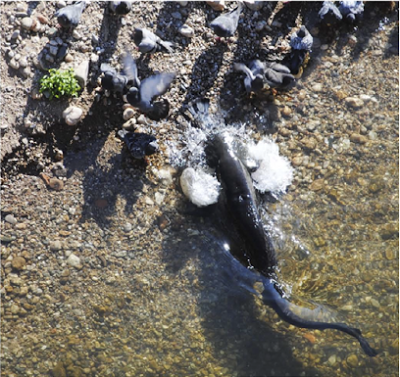Armored Catfish, Loricariidae, are large river-dwelling Fish native to Central and South America. They are covered in plate-like bony scales, and have distinctive 'suckermouths' used to attach themselves to a substrate in fast flowwing waters while still breathing. They are the largest group of Catfish, with over 680 described species and a fossil record that dates back to the Miocene. They are known in the aquarium trade as 'plecs'.
In a paper published in the journal ZooKeys on 29 April 2014, Gabriel de Souza da Costa e Silva, Fábio Fernandes Roxo, Ricardo Britzke and Claudio Oliveira of the Laboratório de Biologia e Genética de Peixes at the Departamento de Morfologia at the Instituto de Biociências at the Universidade Estadual Paulista "Júlio de Mesquita Filho", describe a new species of Armored Catfish from the Rio Tapajós and Rio Tracuá in Pará State, Brazil.
The new species is placed in the genus Pseudancistrus and given the specific name zawadzkii, in honour of Cláudio Henrique Zawadzki, of the Universidade Estadual de Maringá, an expert on Catfish. Pseudancistrus zawadzkii is a 128.7−87.5 mm dark greenish-brown Armoured Catfish with yellow spots. It has a distinctive 'mustache' of odontodes (a form of scale structurally similar to a tooth, with a pulp cavity and dentine and enamel layers, but found outside the mouth and not used as a tooth) on either side of the snout. Such structures are usually for sensory purposes in Fish; just as human teeth can be notoriously sensitive to the wrong things being placed in our mouths, the tooth-like structures of some fish can be used to probe sediments or scent the water for desired foodstuffs.
Pseudancistrus zawadzkii, female specimen. Silva et al. (2014).
Pseudancistrus zawadzkii was found living living around the confluence of the Rio Tapajós and Rio Tracuá in Pará State, Brazil; an area of fast flowing, clear waters with numerous waterfalls and rocky islands.
Map showing the two locations (black circle and red square) where Pseudancistrus zawadzkii was found living. Silva et al. (2014).
See also...
Follow Sciency Thoughts on Facebook.





